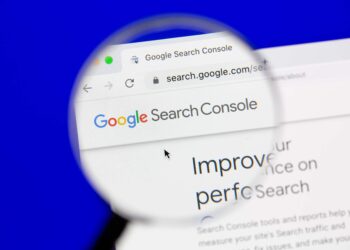Clearly, generative AI has changed the game when it comes to content creation. It can write product descriptions, poetry, and even college-level essays in a matter of seconds, making it no surprise that law firms and their marketing teams are considering how to use AI to generate blog content.
Let’s get the broader question out of the way – you can use AI to create legal content, provided there is substantial human oversight. Not only is oversight necessary for professional and legal reasons, but lawyers’ duty to supervise almost certainly extends to tasks delegated to generative AI models.
AI Hallucinates Facts
The reality is that AI frequently spits out incorrect information, a problem that it’s creators have termed “hallucination.” In a regulated profession like law, getting the details wrong about legal facts like statutes of limitations or criminal laws can have disastrous consequences. Not only could a lawyer face disciplinary action for making false or misleading statements, but a client who relied on the incorrect information could potentially file a malpractice claim.
The perils of relying on AI in the legal field were recently laid bare when two New York lawyers filed a brief that was generated in part by ChatGPT. In the brief submitted by attorneys Steven Schwartz and Peter LoDuca, there were citations to six completely non-existent cases. At the time of this writing, the judge overseeing the case is considering whether to sanction Schwartz and DoLuca.
How to Use AI to Generate Marketing Content
Of course, using AI to create marketing content is significantly different than relying on it for legal research. That said, content created by generative AI could easily violate ABA Model Rule 7.1’s prohibition on false or misleading statements.
A lawyer shall not make a false or misleading communication about the lawyer or the lawyer’s services. A communication is false or misleading if it contains a material misrepresentation of fact or law or omits a fact necessary to make the statement considered as a whole not materially misleading.
Furthermore, your state may have rules against calling yourself an expert or a specialist without state bar certification. At this point, AI does not “know” these rules and may generate content with violative language.
In order to safely and ethically use AI to create legal content, a lawyer must, at a minimum:
- Learn how to correctly prompt the AI model
- Closely review it for errors and fact-check any statements of law or fact
- Review it for compliance with advertising rules
The content AI generates is often generic, even when you prompt it to write in a certain style or include certain keywords. As a result, you’ll need to go through its output and make sure it is written in an appropriate voice and brand it to your firm. If you want to add any marketing language (e.g. “Over 100 million recovered” or “50 years of collective experience” you’ll probably want to do that at this stage.
Next, the AI-generated content should be optimized for search engines. This means determining the target keyword, ensuring the correct keyword density, creating internal and external links, and adding header tags in an organized and logical way.
But wait – there’s more!
At this point, the content needs to actually be posted to the website. This involves going into the backend of a website, posting the content into a new blog, ensuring the formatting is correct, finding and adding an image, adding an alt-attribute to the image, categorizing, tagging, and creating a unique meta-description. Finally, it’s not a bad idea to submit the content to Google to speed up the indexing process.
So – Is Using AI to Create Legal Content Actually Faster?
All of this raises the initial question posed in the title of this article – is using AI for legal blogging faster than writing from scratch? As usual, the answer is that ‘it depends.” Some of the factors that influence whether it’s faster to use AI than it is to write from scratch include your ability to prompt the AI correctly, the complexity of the topic, and the speed at which you write.
In conversations with other content professionals working in the legal space and experiments internally at Lexicon Legal Content, we have found that AI can certainly speed up the writing process, but using AI to generate substantive content from scratch isn’t necessarily the best way to use it. In fact, using it to generate hundreds of words of content may actually slow the content creation process down. Some of the ways that AI can help lawyers and marketing teams create content more quickly include:
- Coming up with content topics
- Rewriting boilerplate sections of content (g, calls to action)
- Providing lists (g., types of injuries or causes of accidents)
- Proofreading content
- Overcoming writer’s block
Properly Using AI is Emerging as a Professional Skill
When ChatGPT first hit the scene, many observers were suggesting the end of human content creation. The reality is that with its limitations, asking AI to create a 1000-word blog on “How Courts Separate Assets in Divorce” may create more work for lawyers and their marketing teams than writing it from scratch. That said, using it for certain tasks associated with content creation can certainly speed the process up.
The fact is that using AI for certain tasks is a skill and one that busy professionals may not
have the time or desire to learn. While AI can certainly help content creation teams operate
more efficiently, you still need someone operating the AI in the right way. Furthermore,
expert oversight is needed to ensure that its output is compliant with professional
standards – especially in legal content creation.








